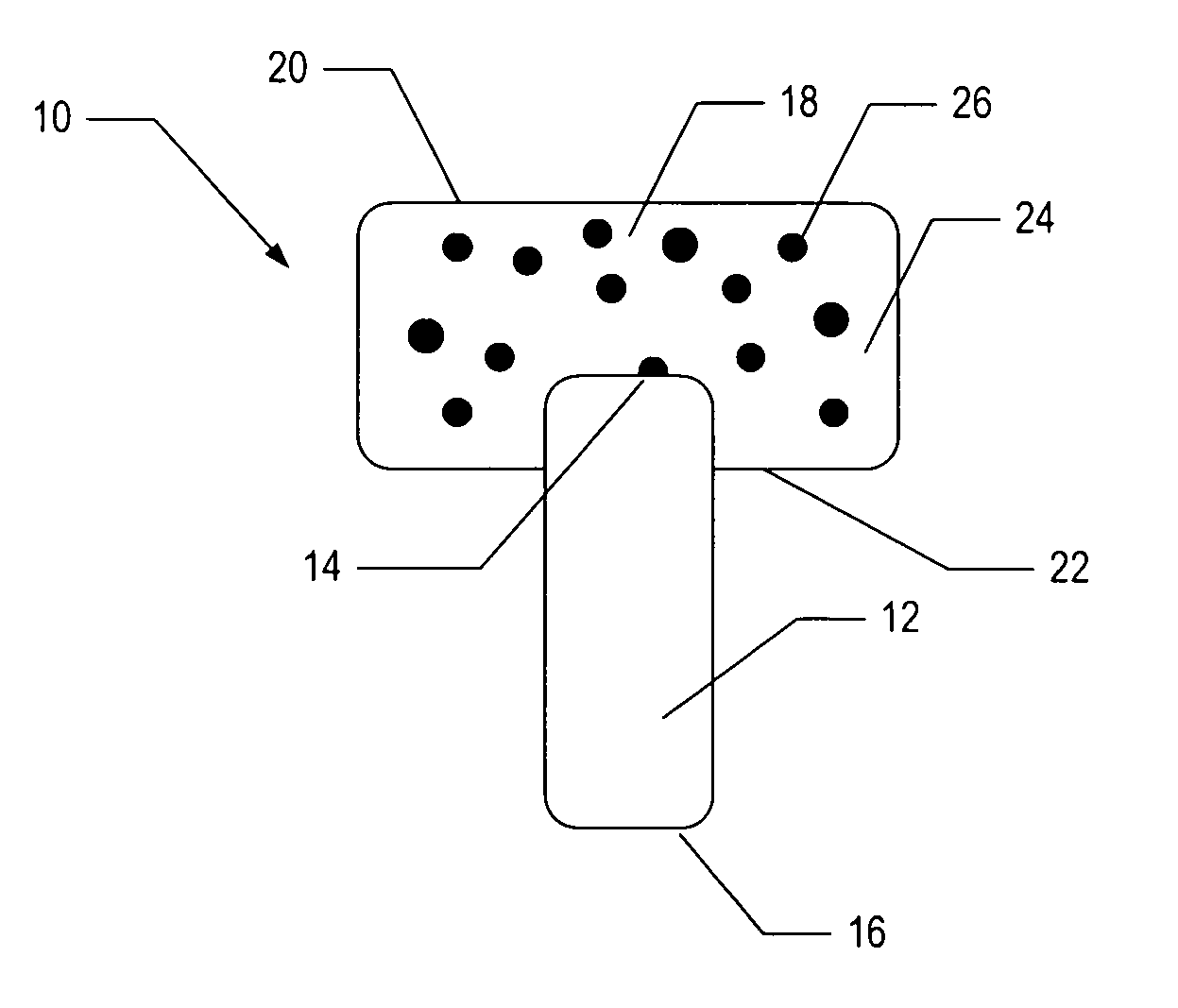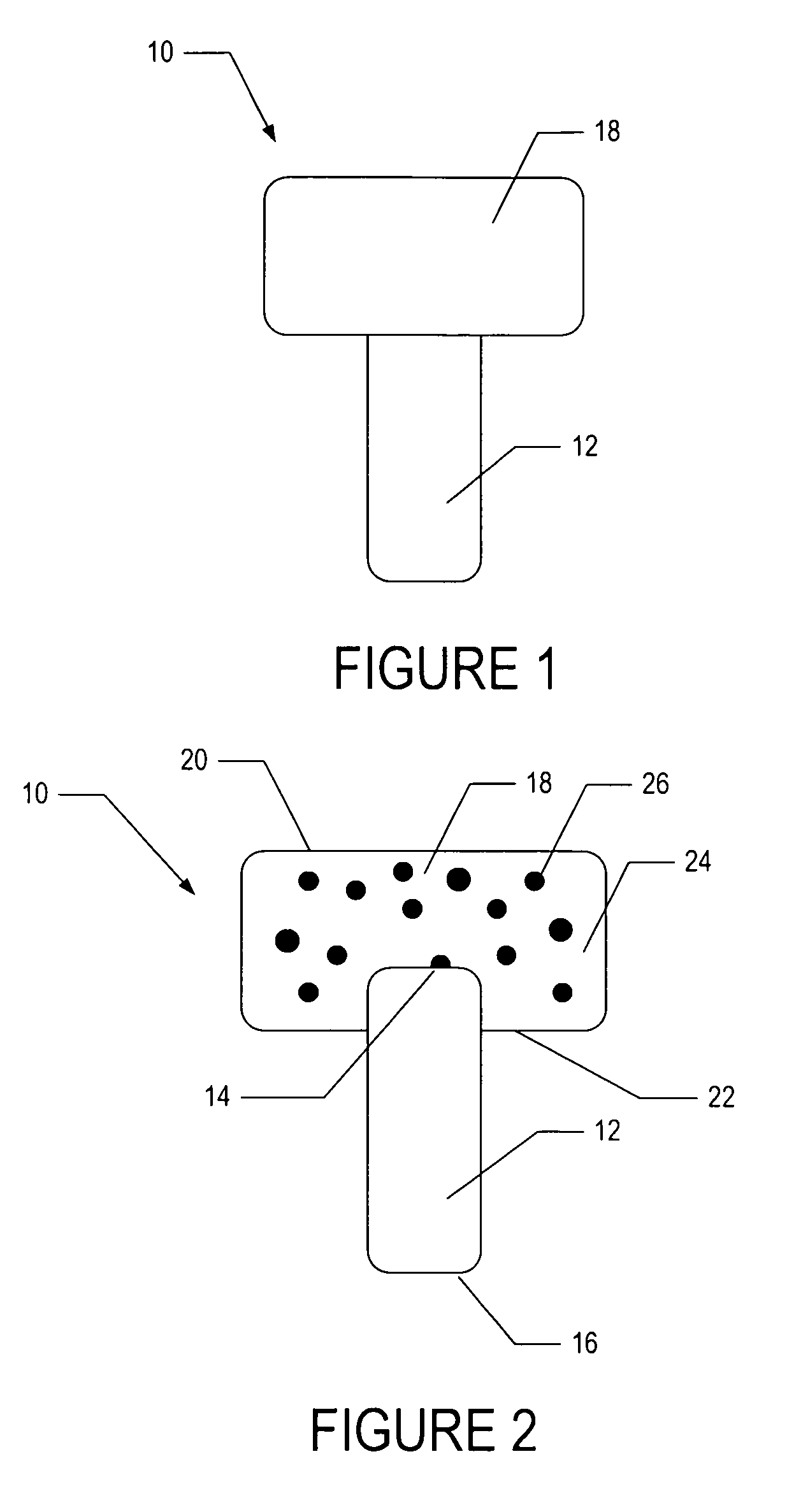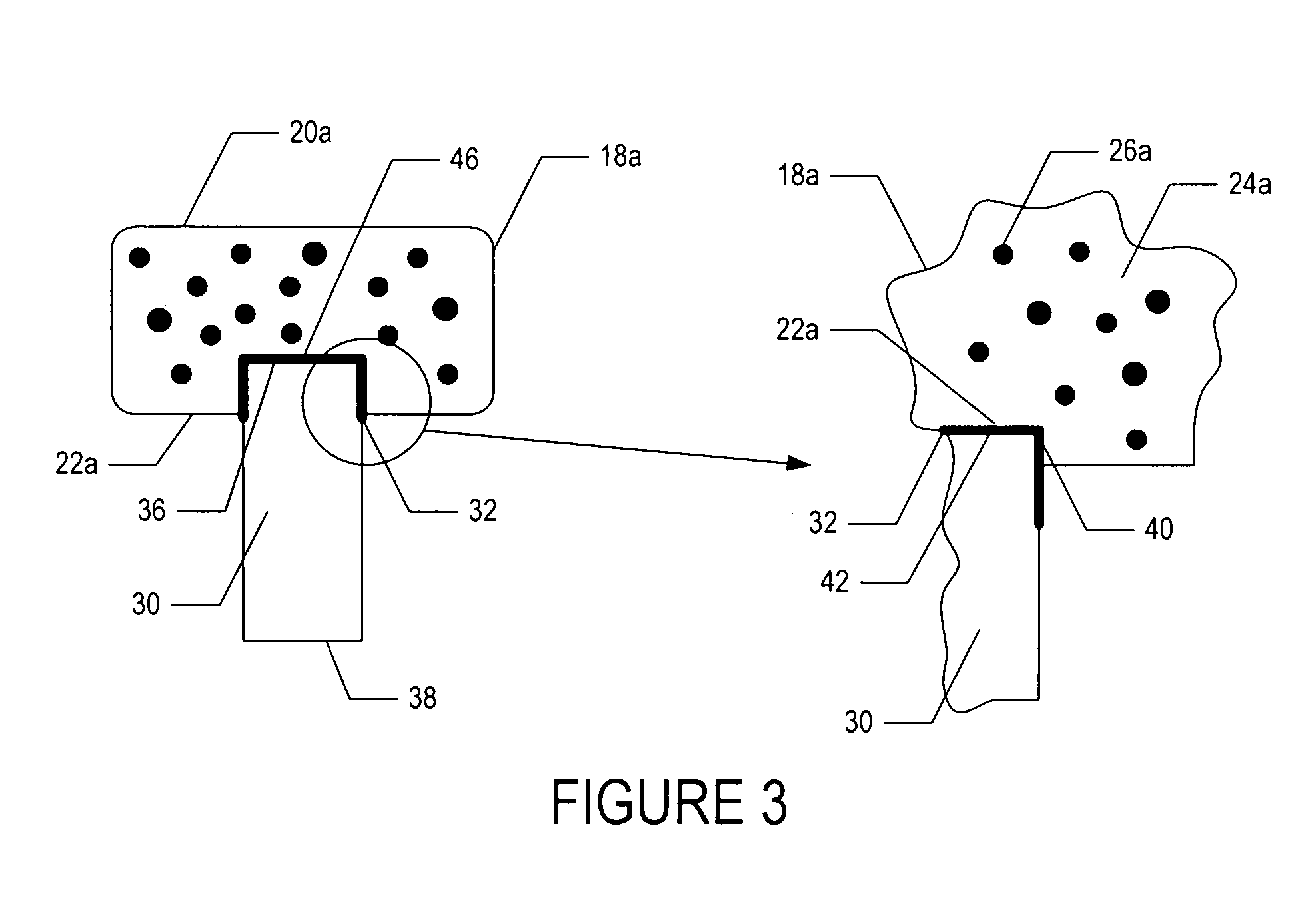Synthetic osteochondral composite and method of fabrication thereof
a composite and osteochondral technology, applied in the field of surgical instruments and procedures, can solve the problems of limited tissue supply, immunorejection, and lack of current techniques, and achieve the effects of improving the quality of li
- Summary
- Abstract
- Description
- Claims
- Application Information
AI Technical Summary
Benefits of technology
Problems solved by technology
Method used
Image
Examples
example 1
Mesenchymal Stem Cells were Obtained from Bone Marrow of NZW Rabbits
[0043]To obtain the chondrogenic cells to be incorporated into the various embodiments of the osteochondral composites discussed below, the following experiment was conducted. Bone marrow-derived mesenchymal stem cells (MSCs) were prepared from euthanized New Zealand White (NZW) rabbits, using established methods.
[0044]Marrow plugs were removed from the femur or humerus of NZW rabbits with intramedullary-pin drilling and a bone curette and then transferred to 50-ml centrifuge tubes containing 25-ml of a culture medium containing DMEM low glucose, 10% fetal bovine serum (FBS), and penicillin / streptomycin / amphotericin (p / s / a). After vortexing and spinning for 5 minutes at 1,500 rpm, the fat layer and medium were removed and the pellet was then resuspended in 8-ml of culture medium and vortexed briefly. The 8-ml suspension was drawn into a 10-ml syringe with an 18-gauge needle and transferred to a new 50-ml centrifuge ...
example 2
Bone Marrow Derived Mesenchymal Stem Cells were Cultured with Hydrogel Polymers
[0047]The bone marrow derived MSCs obtained using the methods described in Example 1 were trypsinized with 0.25% trypsin in 1 mM EDTA, counted with a hemocytometer, and then resuspended by mixing the MSCs with poly(ethylene glycol) diacrylate (PEGDA) / photoinitiator solution at a concentration of 5-10×106 cells / cm3. The cell culture medium was further supplemented with 10 ng / ml TGF-β. Cell cultures were incubated for one week in 95% air / 5% CO2 at 37° C. with a fresh medium change every 3-4 days. After one week of culture at these conditions, chondrogenic differentiation of MSCs was achieved.
example 3
Osteochondral Composites were Fabricated using Bioactive Glass and PEG Hydrogel
[0048]To demonstrate the feasibility of fabricating an osteochondral composite having a PEG hydrogel mechanically interlinked with a bioactive glass base, the following experiment was conducted.
[0049]In one embodiment, a bioactive glass, designated 13-93, with the composition 53 wt % SiO2, 20 wt % CaO, 6 wt % Na2O, 12 wt % K2O, 5 wt % MgO, and 4 wt % P2O5 was formed into cylindrical bases. Porous 13-93 bioactive glass cylinders (3 mm diameter×3.5 mm long) were prepared by pouring glass particles ranging in size from 212-325 μm into a graphite mold, and sintered for 15 min at 700° C. to form a network of particles.
[0050]PEG hydrogel was prepared by dissolving poly(ethylene glycol)diacrylate (PEGDA) (Shearwater, Huntsville, Ala.) in sterile phosphate buffer saline (PBS) supplemented with 1% penicillin and streptomycin (Gibco, Carlsbad, Calif.) to a final solution of 10% w / v. A biocompatible ultraviolet phot...
PUM
| Property | Measurement | Unit |
|---|---|---|
| diameter | aaaaa | aaaaa |
| thickness | aaaaa | aaaaa |
| thickness | aaaaa | aaaaa |
Abstract
Description
Claims
Application Information
 Login to View More
Login to View More - R&D
- Intellectual Property
- Life Sciences
- Materials
- Tech Scout
- Unparalleled Data Quality
- Higher Quality Content
- 60% Fewer Hallucinations
Browse by: Latest US Patents, China's latest patents, Technical Efficacy Thesaurus, Application Domain, Technology Topic, Popular Technical Reports.
© 2025 PatSnap. All rights reserved.Legal|Privacy policy|Modern Slavery Act Transparency Statement|Sitemap|About US| Contact US: help@patsnap.com



